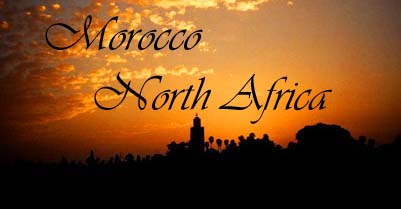Morocco has a history as substantial as any in Africa, Eurasia, or the Americas. In some parts of the world when man was first learning that stone made better tools than twigs, the Moroccan mountains and interior was populated with Libyan and Ethiopian settlers named Barbaroi. Not too long later, Phoenician trading posts flourished in the ports of Chellah (Rabat) and Tingis (Tangier). Morocco has a expansive history that should not be neglected.
In timeworn days, the Sahara Desert ran riot with flora and fauna and hunter-gatherers. These first humans were among the earliest of Morocco's ancestors. Archeologists have shown, too, that at around the time of the Stone Age, Morocco became flushed with humankind from lands as far off as Egypt, Algeria and Libya.
These earliest settlers-now the Berbers-interrupted any attempt at taking over Morocco's interior. When the Romans came quite a few years later, the Moroccan Berbers astonishingly withstood this occupation. Though the Romans took a great part of Morocco's exterior, the Rif Mountains and High Atlas Mountains were untouched for centuries. Later, too, when the Vandals and Byzantine forces clasped Morocco as their own, the interior-the Berbers in the High Atlas Mountains-remained unified and indomitable.
The Moroccan Berbers were not Islamic, either when Islam reached Tunisia around 650 AD, or when it reached the Moroccan plains by Moussa Ibn Nasr. Many more Moroccans-formerly Christians and Jews-converted to Islam before it unified the country-and the Berbers with it-to the vast religion of Islam today. With the reign of Moulay Idriss II, Arab dominance ruled much of Morocco. With the creation of Fez as an influential city, meandering with trade routes and the noted Kairaouine University, Arab influence became unstoppable.
The dynasties that controlled Morocco came and went. From the Almoravids, Almohads, Merenids to the Wattasids, Saadians, and the Alaouites, Morocco's sovereignty saw countless hills and valleys. The country passed from one ruling force to the next. Even in the 20th century, power struggles seemed to be the norm.
The French colonized Morocco in the early 1900s. With a similar model used elsewhere-even in Tunisia and Algeria-France's hegemony flourished, though they shared several parts of the country close to the Atlantic and Mediterranean with Spain. Smartly, France granted a sort of independence to (some) mountain Berber leaders and their tribes. Rabat and Casablanca were turned into French-style administrative capitals. Through time, world war and several internal and international tensions, in 1956 Sidi Mohammed became king of Morocco. Spain, to this day, still controls Sebta and Mellila on the Mediterranean coast.
Today, Morocco shares some exceptional relations with the rest of the world. The newest ruler, King Mohammed VI, upholds various friendships and alliances with both the Arab and Western spheres. Though the Western Sahara is still of questionable concerns, the present king addresses relevant concerns which will optimistically help Morocco enter into the modern world as contenders in the world economy and market.
Morocco tours and Morocco tourism is booming. Since tourist's numbers are on the rise, the country will soon undergo inevitable (perhaps more western) change. Morocco should be visited sooner rather than later to better understand the old tradition mixing with new ways of thinking and doing.
For more information about Morocco trekking and tour information about Morocco holidays, please visit us at Journey Beyond Travel LLC. We have a quality Morocco travel guide that is updated every day by our wonderfully gifted staff writers. We enjoy sharing information about what Morocco has to offer every sort of traveler.
Article Source: http://EzineArticles.com/?expert=Terry_Hollowell
Subscribe to:
Post Comments (Atom)


No comments:
Post a Comment